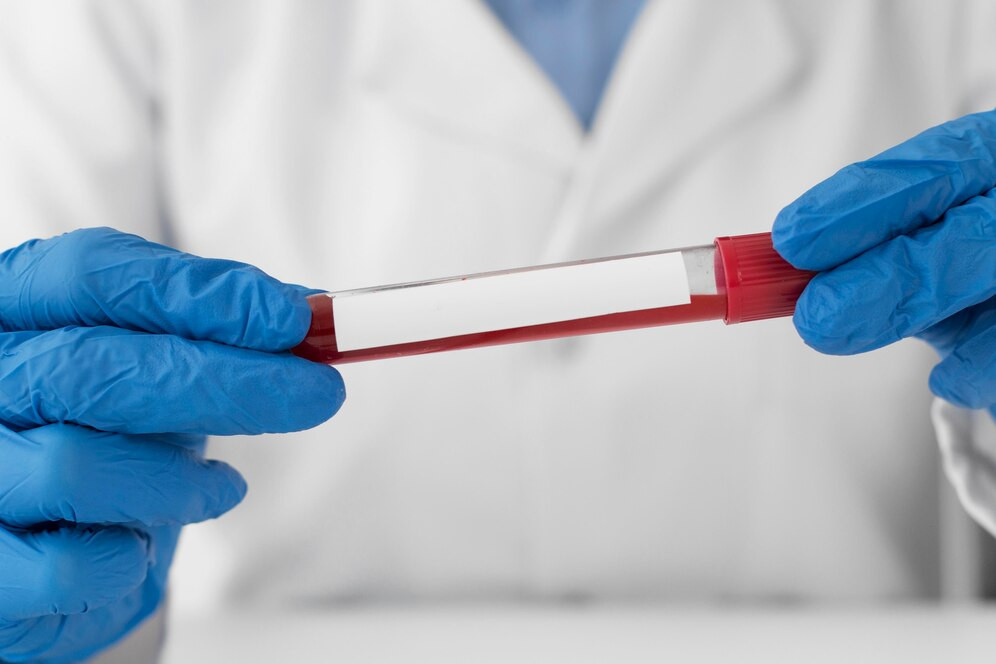Definisi
Toxoplasmosis kongenital adalah penyakit infeksi pada janin yang disebabkan oleh parasit Toxoplasma gondii. Penyakit ini ditularkan dari ibu ke janin. Infeksi ini dapat menyebabkan keguguran dan stillbirth (kematian janin tepat saat lahir). Setiap tahunnya, terdapat 400 hingga 4.000 kasus toxoplasmosis kongenital di Amerika Serikat.
Penyebab
Toxoplasmosis kongenital disebabkan oleh mikroba Toxoplasma gondii. Parasit ini bisa menginfeksi manusia melalui beberapa cara, yaitu:
- Memakan daging mentah atau setengah matang.
- Memakan sayur atau buah yang belum dicuci.
- Meminum air yang mengandung parasit atau telur parasit.
- Memegang tanah yang terkontaminasi atau tinja kucing, lalu tangan yang kotor menyentuh mulut.
Proses Infeksi
Inang atau host infeksi yang pasti bagi Toxoplasma adalah kucing, namun ada pula hewan lainnya yang dapat menjadi inang intermediet. Pada kucing, siklus hidup parasit ini dapat terjadi di dalam dan di luar usus, sementara pada hewan lainnya, siklus hidup parasit hanya dapat terjadi di luar usus.
Parasit ini dapat menular dalam tiga bentuk, yaitu takizoit, bradizoit, dan ookista atau sporozoit. Bradizoit dan takizoit adalah fase pembelahan yang lambat dan cepat (sesuai urutan). Sementara itu, ookista terbentuk dari siklus seksual yang terjadi pada usus kucing. Kucing biasanya terinfeksi apabila memakan hewan yang mengandung bradizoit, atau menyentuh air dan tanah yang mengandung ookista.
Parasit membelah dengan cepat di dalam usus kucing untuk memproduksi ookista. Pada fase akut infeksi, yaitu sekitar 1-2 minggu, tinja kucing mengandung jutaan ookista. Selanjutnya, ookista akan berubah menjadi takizoit jika masuk ke dalam pencernaan kucing dan siklus dimulai dari awal. Jika ookista tertelan oleh manusia, domba, sapi, babi, burung, dan tikus, ookista akan berubah menjadi takizoit atau bradizoit.
Infeksi akut ditandai dengan takizoit yang berkembang biak. Sementara itu, bradizoit dapat tersimpan di jaringan inang intermediet seperti otak, otot jantung, otot rangka, dan organ lainnya, menciptakan infeksi laten (suatu kondisi di mana seseorang telah terinfeksi tetapi tidak mengalami gejala atau keluhan).
Penularan ke Manusia
Ibu yang hamil dapat mengalami toksoplasmosis dengan dua cara, yaitu:
- Infeksi primer (pertama kali) karena mencerna makanan mentah atau minum air dan menyentuh tanah yang terkontaminasi.
- Infeksi laten yang kembali aktif apabila manusia memiliki masalah pertahanan tubuh, misalnya akibat HIV/AIDS.
Parasit ini ditularkan oleh ibu ke janinnya lewat ari-ari. Keparahan penyakit pada janin akan dipengaruhi oleh waktu terjadinya infeksi dalam kehamilan, jumlah parasit, kemampuan parasit untuk menginfeksi, dan status imun ibu.
Faktor Risiko
Pada berbagai tempat di dunia, lebih dari 60% orang sudah pernah terinfeksi toksoplasma. Infeksi toxoplasma terutama tinggi pada daerah beriklim panas dan lembap, serta pada ketinggian rendah, karena ookista paling cepat berkembang pada lingkungan seperti itu.
Jika Anda terienfeksi parasit pada tiga bulan pertama kehamilan, janin Anda memiliki 15-20% kesempatan untuk mengalami toksoplasmosis kongenital dan dalam derajat parah. Namun, jika Anda terinfeksi pada trimester ketiga kehamilan, janin Anda memiliki 60% kesempatan untuk terinfeksi toksoplasma.
Gejala
Gejala toksoplasmosis kongenital dapat bervariasi dari asimtomatik (tidak mengalami gejala) hingga bergejala berat. Ada pula gejala yang baru muncul beberapa bulan, tahun, hingga dekade kemudian. Bayi dengan toksoplasmosis kongenital yang parah biasanya sudah memiliki gejala saat lahir atau bergejala dalam enam bulan pertama kehidupan. Gejala tersebut dapat berupa:
- Lahir prematur – sebagian besar bayi dengan toksoplasmosis lahir prematur.
- Berat badan lahir sangat rendah.
- Kerusakan mata dan masalah penglihatan.
- Kuning (jaundice) pada kulit dan bagian putih pada mata.
- Keluhan pencernaan seperti diare atau muntah.
- Anemia (kekurangan sel darah merah).
- Sulit menyusui.
- Pembengkakan kelenjar getah bening.
- Pembesaran hati dan limpa.
- Makrosefali, ukuran kepala yang terlalu besar, dapat berupa hidrosefalus (pengumpulan air di dalam kepala).
- Mikrosefali, ukuran kepala yang terlalu kecil.
- Ruam pada kulit.
- Kehilangan pendengaran.
- Pengapuran dan kerusakan otak yang disebabkan oleh infeksi parasit.
- Kejang.
- Retardasi mental ringan hingga berat.
Diagnosis
Toksoplasmosis kongenital dapat didiagnosis dengan berbagai pemeriksaan. Dokter mungkin akan memeriksakan darah untuk mendeteksi keberadaan parasit. Jika tes ini positif, dokter dapat melakukan pemeriksaan saat kehamilan untuk menentukan bayi terjangkit parasit atau tidak. Pemeriksaan ini dapat berupa:
- Ultrasonografi untuk mengecek abnormalitas janin, misalnya hidrosefalus.
- Polymerase chain reaction (PCR) pada cairan ketuban.
- Tes darah janin.
Jika bayi Anda memiliki gejala serupa toksoplasmosis kongenital, dokter dapat melakukan beberapa pemeriksaan seperti:
- Tes antibodi pada darah ari-ari atau dari cairan dalam otak bayi.
- Tes darah.
- Pemeriksaan mata.
- Pemeriksaan saraf.
- Computed tomography scan (CT scan) atau magnetic resonance imaging (MRI) pada otak bayi.
Tata Laksana
Toksoplasma kongenital dapat diobati sebelum dan sesudah lahir. Obat-obatan yang dapat diberikan sebelum lahir adalah:
- Antiparasit dan antibiotik golongan makrolid (spiramisin) untuk mencegah penularan parasit dari ibu ke anak.
- Antiparasit pirimetamin dan antibiotik sulfadiazin pada akhir trimester (3 bulan) pertama jika janin Anda sudah terkonfirmasi mengalami infeksi parasit.
- Suplemen asam folat untuk melindungi sumsum tulang Anda dan janin, yang dapat berkurang apabila mengonsumsi pirimetamin dan sulfadiazin.
- Pirimetamin, sulfadiazin, dan asam folat diberikan selama 1 tahun.
- Steroid jika penglihatan bayi terancam atau jika janin memiliki nilai protein tinggi pada cairan otaknya.
Pengobatan toksoplasma kongenital setelah lahir dapat berupa obat-obatan, tergantung gejala yang dialami bayi Anda.
Komplikasi
Komplikasi toksoplasmosis kongenital yang tidak diterapi adalah:
- Buta
- Tuli
- Penurunan kecerdasan
- Keterlambatan pertumbuhan yang cukup parah
Keadaan bayi dalam jangka panjang sangat tergantung dari keparahan gejala. Infeksi parasit pada umumnya menyebabkan masalah pada kehamilan jika terjadi pada awal kehamilan dibandingkan pada akhir kehamilan. Jika terdeteksi cukup awal, obat-obatan dapat diberikan sebelum parasit menjangkiti janin Anda. Sekitar 80% bayi dengan toksoplasmosis kongenital dapat memiliki masalah penglihatan dan belajar dalam hidupnya. Beberapa bayi bahkan dapat menjadi buta dan memiliki bekas luka pada mata sekitar ≥30 tahun setelah lahir.
Pencegahan
Toksoplasmosis kongenital dapat dicegah dengan cara sebagai berikut:
- Memasak makanan secara teliti.
- Mencuci dan mengupas seluruh buah dan sayur.
- Sering mencuci tangan dan papan yang digunakan untuk memotong daging, sayur, atau buah.
- Menghindari minum air yang tidak difilter.
- Menggunakan sarung tangan saat berkebun atau menghindari berkebun agar tidak berkontak dengan tanah yang dapat mengandung tinja kucing.
- Menghindari mengganti kotak kotoran kucing.
Jika Anda memelihara kucing, Anda dapat memilih untuk tetap memelihara kucing meskipun terinfeksi parasit Toxoplasma. Risiko tertular parasit dari kucing Anda sangat rendah. Namun, pastikan ada orang lain yang mengganti kotak kotoran kucing selama masa kehamilan Anda.
Kapan Harus ke Dokter?
Anda disarankan untuk segera mengunjungi dokter apabila Anda mengalami tanda-tanda infeksi pada kehamilan. Tanda infeksi dapat berupa demam, mual, muntah, nyeri sendi dan otot, dan sebagainya. Infeksi toksoplasma pada orang dewasa sehat tidak menyebabkan gejala yang parah, namun hal ini dapat mengganggu pertumbuhan dan perkembangan janin. Selain itu, Anda disarankan untuk memeriksakan kehamilan secara rutin, supaya dokter dapat memeriksa janin Anda dan memastikan tidak ada kelainan pada janin Anda.
Mau tahu informasi seputar penyakit lainnya? Cek di sini, ya!
- dr Hanifa Rahma
Kivi, R., & Krucik, G. (2018). Congenital Toxoplasmosis: Causes, Symptoms & Diagnosis. Healthline. Retrieved 30 September 2022, from https://www.healthline.com/health/congenital-toxoplasmosis.
Kota, A., & Shabbir, N. (2022). Congenital Toxoplasmosis. Ncbi.nlm.nih.gov. Retrieved 30 September 2022, from https://www.ncbi.nlm.nih.gov/books/NBK545228/.
Schwartz, C., Zieve, D., & Conaway, B. (2021). Congenital toxoplasmosis: MedlinePlus Medical Encyclopedia. Medlineplus.gov. Retrieved 30 September 2022, from https://medlineplus.gov/ency/article/001360.htm.












